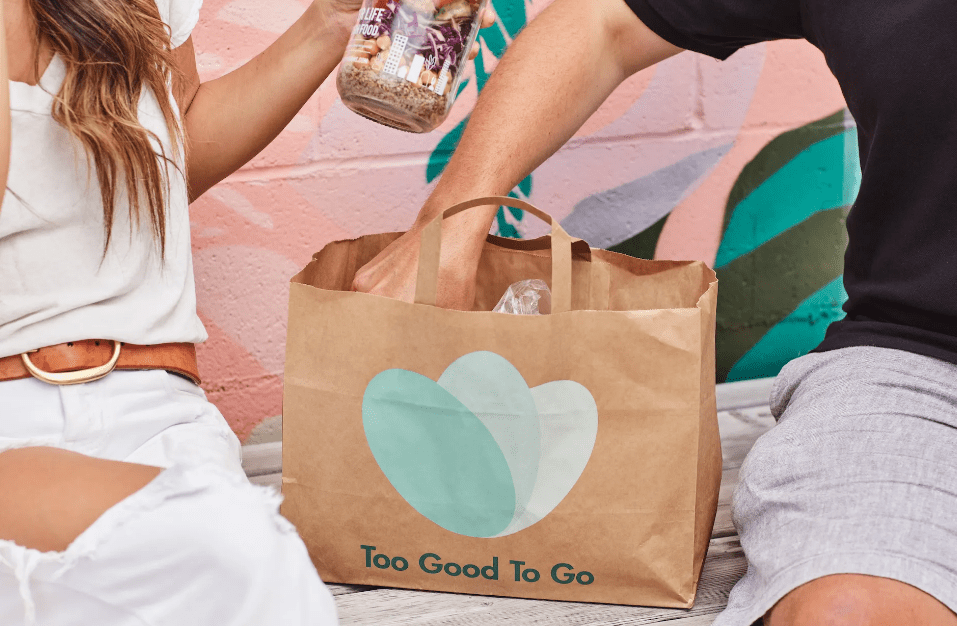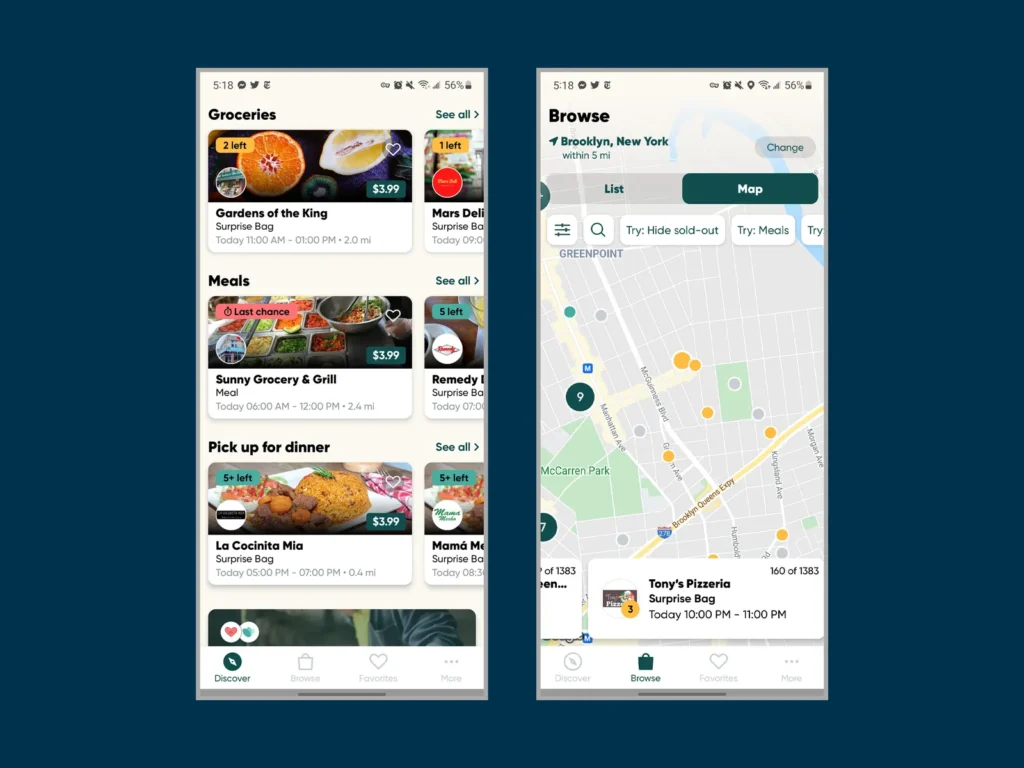Grab a Snack—and Combat Food Waste—With This App

FOR THE PAST several weeks, my fiancée and I have made it a habit to glance at an app during our dog walks. No, not Pokémon Go, but an app called Too Good To Go. Through the app, you can hunt for nearby restaurants, bakeries, or grocery stores that may have goods that would otherwise end up as food waste by the end of the day (i.e., in the landfill).
These bags typically cost around $3 to $5, and they’re called Surprise Bags because you’re never sure exactly what you’ll get. You can guess—a bakery will probably leave you with a few pastries—but that element of surprise is what makes it so exciting and fun. Sometimes you strike gold with an amazing value—like $3 for 10 bagels, many of which are still in my freezer waiting to be toasted up for breakfast.
We’ve gotten bags full of pastries for a fraction of what we’d usually pay; full-size chocolate bars and other snacks for whenever the hunger pangs kick in, a falafel platter, burritos, and a couple of slices of pizza. Not every Surprise Bag is a winner—one day we were left with plain ol’ seasoned rice and on another a teeny-tiny piece of grilled chicken dwarfed between plain hamburger buns. From a local Thai grocery store, we’ve received three jars of turmeric powder over a few Surprise Bags (my mom would be thrilled).
But it’s hard to complain. Rarely do I ever rave about a product to friends and family, yet I’ve been mentioning Too Good To Go to practically anyone who’ll listen (I heard about it via word of mouth from a friend). It just feels—pardon the pun—too good to be true.
Combating Food Waste
If something sounds too good to be true, it usually is. But in this case, I didn’t need to prepare for the worst. Mike von Massow, a professor at the University of Guelph researching food waste, says Too Good To Go is a “really cool idea.”
Food waste is a growing problem. A 2021 report from the World Wildlife Fund (WWF) notes that approximately “2.5 billion tons of food goes uneaten around the world each year,” or around 40 percent of all food grown. As food waste is often not separated from other waste streams, it’s difficult to measure, but much of it ends up in a landfill generating methane emissions that contribute to climate change. Worse yet, around 70 percent of biodiversity loss is attributed to agriculture. Commercial food production is not efficient.
The amount of food an individual restaurant tosses out is usually small, but when you factor in all restaurants in the US, it adds up. Massow notes that the Too Good To Go app also saves restaurants time and money, since they don’t need to list exactly what customers will get. It’s a surprise! There’s no need to worry about distributing the food, since people pick it up themselves. And if a restaurant puts out tons of Surprise Bags, it may even lead them to question why they’re generating so much surplus.

“[Our partners] also say, ‘Is it too good to be true?’” Basch says. “For them, it’s really a win-win. They don’t throw food away anymore, and honestly, when you spend a lot of time and energy and love to make your food, it’s not great to throw it away. It actually gets new consumers through their doors as well, which they love—potential future loyal consumers—and getting a little bit back for the food they produced is appreciated.”
The store managers and owners I spoke to only had good things to say about the app. Ava Bastien, the owner of a vegan bakery called Ava’s Lifeline, says she’d love it if the app paid her faster, but she thinks it’s a good way to help people who can’t afford her standard prices. For Bagel Point’s co-owner and operations manager, Sam Kaplan, Too Good To Go is another way for the bakery to distribute surplus bagels so there’s no waste.
Bagel Point donates surplus bagels to nonprofits like City Harvest, senior centers, churches, and mosques, but sometimes those don’t take them either. This problem was exacerbated during the height of the pandemic in 2020. “I personally had to drive around and beg these places to take my food,” Kaplan says. “I can’t throw this in the garbage. These are fresh bagels.”
Using Too Good To Go has made me significantly more aware of the food waste I produce on a day-to-day basis, even if I haven’t figured out a way to overhaul my habits just yet. It’s hard to change individual behavior. But if apps like Too Good To Go can generate interest and spread through social media or word of mouth, that could spark some movement on food policy at the local and federal levels. Or large institutional businesses might take note.
Basch says Too Good To Go already works with a few larger businesses, like some Panera locations and Blue Bottle Coffee. But the brand is hoping to secure more of these national accounts to expand its growth. Starbucks is a major partner in Europe, and there are ongoing discussions with the company’s US team.
Scale is arguably the biggest stumbling block for Too Good To Go. Unless you live in one of 12 US cities, like New York, Boston, or San Francisco, you’re not currently able to use the app. Expansion plans are in the works, but such growth will take time.
In the meantime, I will take solace in knowing that my occasional Surprise Bag adventures do make a difference, even if it’s small. “We like to have silver bullets,” Massow says. “[But] the truth is, we need to make a bunch of small things to make a big difference, and that’s really true with food waste. There are a lot of initiatives, including this one, which won’t solve the problem but have the potential to reduce the amount of food that gets discarded.”
